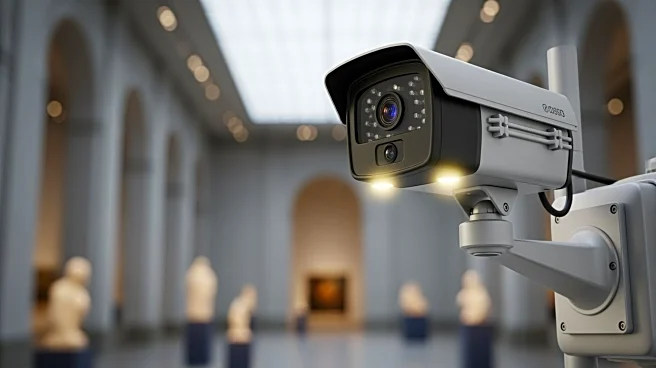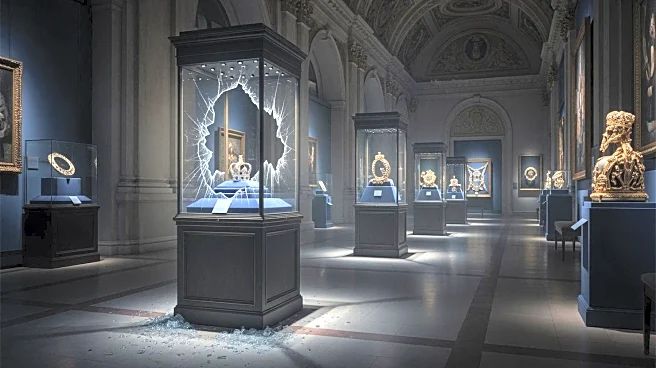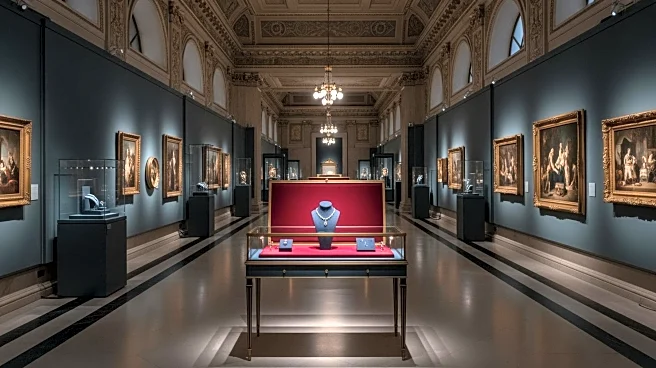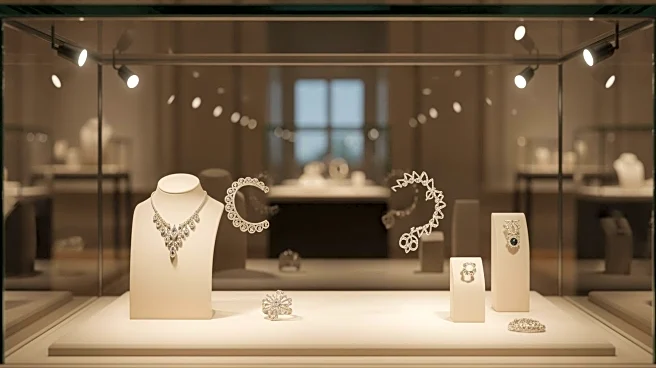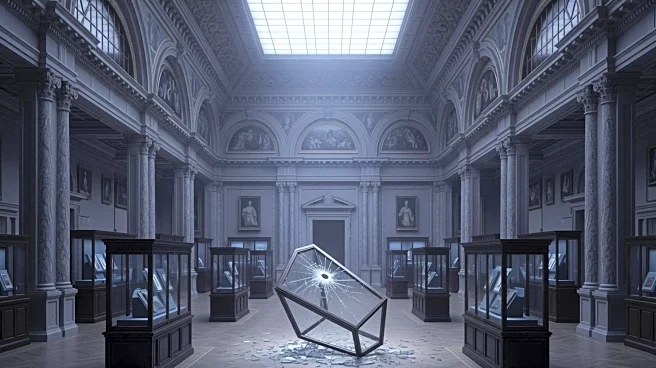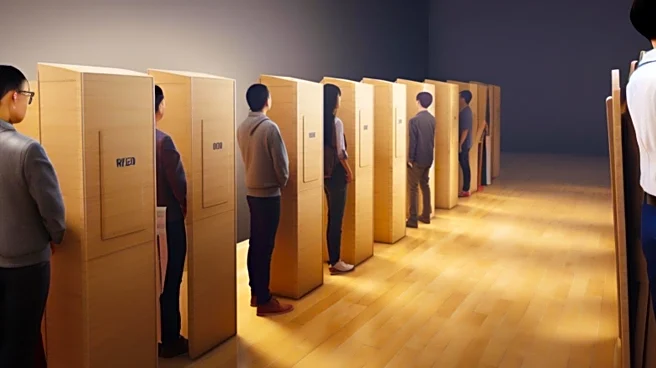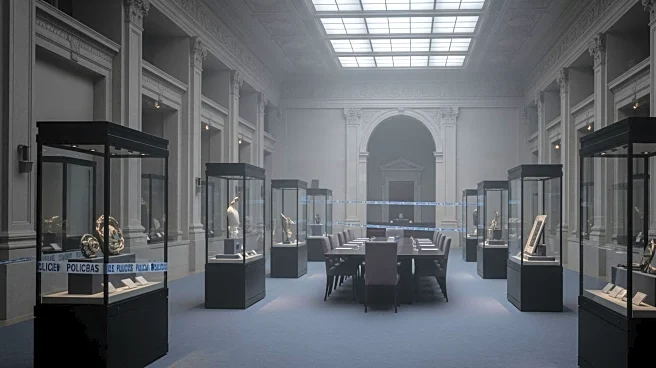What's Happening?
In a swift and audacious heist, thieves managed to steal valuable jewelry from the Louvre Museum in Paris. The robbery took place in under ten minutes, with the perpetrators using a truck-mounted ladder to access a second-floor window. This incident has
raised significant concerns about security measures at one of the world's most renowned museums. Catherine Porter, a New York Times international correspondent, provided insights into how the robbery was executed, highlighting the precision and planning involved in the theft.
Why It's Important?
The theft at the Louvre Museum is a stark reminder of the vulnerabilities that even the most secure institutions can face. This incident could have far-reaching implications for museum security protocols worldwide, prompting a reevaluation of existing measures to prevent similar occurrences. The stolen jewelry, likely of significant historical and cultural value, represents a loss not only to the museum but also to the global community that treasures such artifacts. The heist may also impact tourism and public trust in museum security, potentially leading to increased insurance costs and stricter access controls.
What's Next?
In response to the heist, the Louvre Museum is expected to conduct a thorough investigation to identify security lapses and implement enhanced protective measures. Law enforcement agencies in France and potentially internationally will likely collaborate to track down the stolen items and apprehend the culprits. The museum community may also convene to discuss best practices and share insights on preventing future thefts. Public interest in the case could lead to increased scrutiny of museum operations and security standards.
Beyond the Headlines
This event highlights the ongoing challenge of balancing public access to cultural treasures with the need for stringent security. The heist may prompt discussions about the ethical responsibilities of museums to protect their collections while ensuring they remain accessible to the public. Additionally, the incident could lead to technological innovations in security systems, as museums seek to integrate advanced surveillance and monitoring tools to safeguard their assets.


